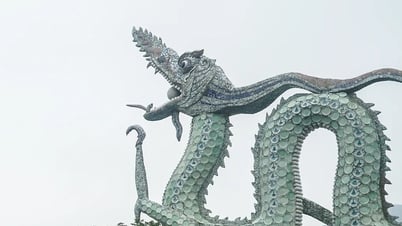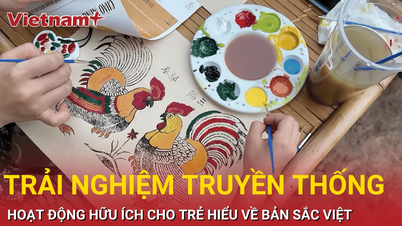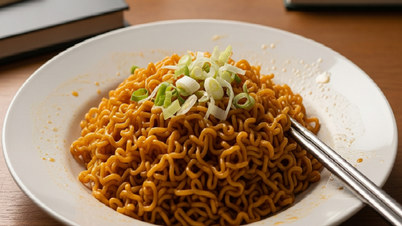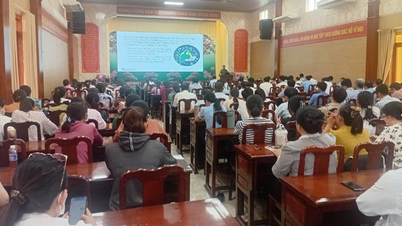That is the perspective and sharing from historian Duong Trung Quoc at the discussion on "Vietnamese Fish Sauce - Elevating Vietnamese Cuisine " organized by the Vietnam Fish Sauce Association and the Vietnam Culinary Culture Association on September 30, in Hanoi.

Historian Duong Trung Quoc shares at the seminar
According to Mr. Duong Trung Quoc, from 1916 to 1917, the French colonial government had to issue regulations on what fish sauce was, what proportions... to fight against fake fish sauce. At that time, Vietnamese fish sauce participated and was present at many fairs in France.
Nowadays, fish sauce has become a familiar spice and dish in Vietnamese family meals. In particular, in many Vietnamese dishes, the most familiar is pho, fish sauce is an "indispensable" spice. Not only conquering Vietnamese people, for foreign guests, pho is also one of the few attractive dishes, the most chosen.
Historian Duong Trung Quoc emphasized that foreigners consider fish sauce as an element that helps them identify Vietnamese culture and cuisine. The bowl of fish sauce in the middle of the meal represents the community spirit, integrating the entire culture of the Vietnamese people.
But unfortunately, we do not know how to elevate dishes and special spices such as fish sauce to culinary culture like Korean kimchi. Kimchi has become an indispensable culinary culture in Korean meals. They have been successful in promoting it for export around the world .
Accordingly, Mr. Duong Trung Quoc proposed that businesses and associations should join hands to build a Vietnamese fish sauce museum to preserve historical stories. These are lessons to continue receiving, preserving and promoting a unique traditional cultural value, a specialty of Vietnam.
Promote and introduce fish sauce to international customers
Sharing the same opinion with historian Duong Trung Quoc, culinary artist, "king of chefs" Pham Tuan Hai, shared that for pho or stir-fried dishes, without fish sauce, the flavor of the dish cannot be enhanced. Each chef has his own way of using spices to put into each stage of processing. Similarly, fish sauce, if used in different stages of processing, will bring a distinct flavor.
Artisan Pham Tuan Hai also shared a story, when he accepted to be the representative of a restaurant in Europe, they really liked Vietnamese fish sauce so they set a challenge of how to combine fish sauce with cheese. This is completely doable, not difficult.
"For example, grilled oysters with cheese, about ten years ago very few people knew about it, but now it is popular, almost every restaurant can make it. To make this dish, people grind cheese, then season it with fish sauce and a little turmeric powder, then cover the oysters to grill. This combination makes the dish more attractive and nutritious," said Mr. Hai.
According to Mr. Hai, current surveys show that up to 40% of restaurants specializing in Western food still use fish sauce to prepare dishes.
"I really appreciate the sharing from historian Duong Trung Quoc. If we know how to attach cultural and historical stories to dishes, then surely fish sauce, and more broadly, Vietnamese cuisine, will fly higher and further," Mr. Hai expressed.
Associate Professor - Dr. Tran Dang, Chairman of the Vietnam Fish Sauce Association, said that the story of when Vietnamese fish sauce appeared has been of interest to many people but is not easy to answer, and will have to continue researching to be published.
Acknowledging the enthusiastic contributions from the discussion, the Vietnam Fish Sauce Association continues to coordinate with the Vietnam Culinary Culture Association to build and implement a project to build and develop Vietnamese culinary culture into a national brand.
In addition, the two associations will join hands to build a dossier to submit to the authorities to recognize fish sauce as an intangible heritage of Vietnam; continue to strengthen and promote the organization of festivals related to fish sauce to introduce this unique culinary culture to international tourists when coming to Vietnam.
Source link





























































































Comment (0)